Can salmon farmers follow poultry’s lead?
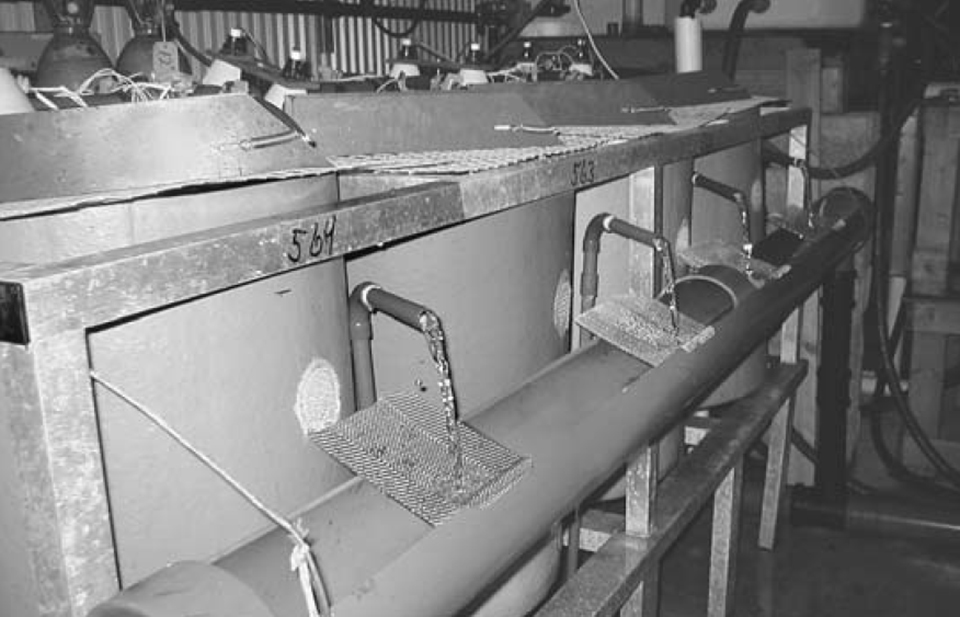
Feed is the largest variable cost in intensive production of farmed fish. In Norway, for example, feed constitutes more than 50 percent of the cost of Atlantic salmon production. Increased feed efficiency is therefore of great importance in order to increase economic margins and improve production in situations with limited feed resources. Greater efficiency can be obtained through improved feeds and production management, but also through direct or indirect genetic selection for increased feed utilization.
Direct selection is not currently possible, because accurate feed intake measurements are not feasible in largescale breeding programs with present technology, or are very costly to measure. However, selection for increased growth rate will result in an indirect (correlated) response for increased feed efficiency. This has proven to be the case for poultry, swine, sheep, and cattle; and also in a study with Atlantic salmon in Norway.
Improved feed efficiency
Salmon selected for increased growth rate over five generations were compared with nonselected wild salmon in a 14-week growth study (Thodesen et al., 1999). The selected salmon had 40 percent higher relative feed intake per unit of body weight per day, 113 percent higher growth rate, and 25 percent higher feed efficiency ratio. Given Norway’s current salmon production of 450,000 metric tons (MT), this improvement in feed efficiency could be worth approximately U.S. $110 million.
Wild vs. selected salmon
The difference in feed efficiency between the selected and wild salmon indicated a correlated response in feed efficiency of 4.6 percent per generation. Therefore, the higher growth rate of the selected salmon was the result of both greater feed consumption (larger appetite) and more efficient utilization of the feed for growth. The main reason for this was an increased amount of metabolizable energy available for gain relative to the energy needed for maintenance. Feed Efficiency and Growth Rates In the above experiment, feed efficiency ratio showed a high positive correlation with growth rate (r = 0.90). This strong association between feed efficiency and growth rate in Atlantic salmon was recently confirmed in a 10-week growth experiment with 14 replicated full-sib family groups (Thodesen et al., 2001), as shown in Fig. 1 (r = 0.79).
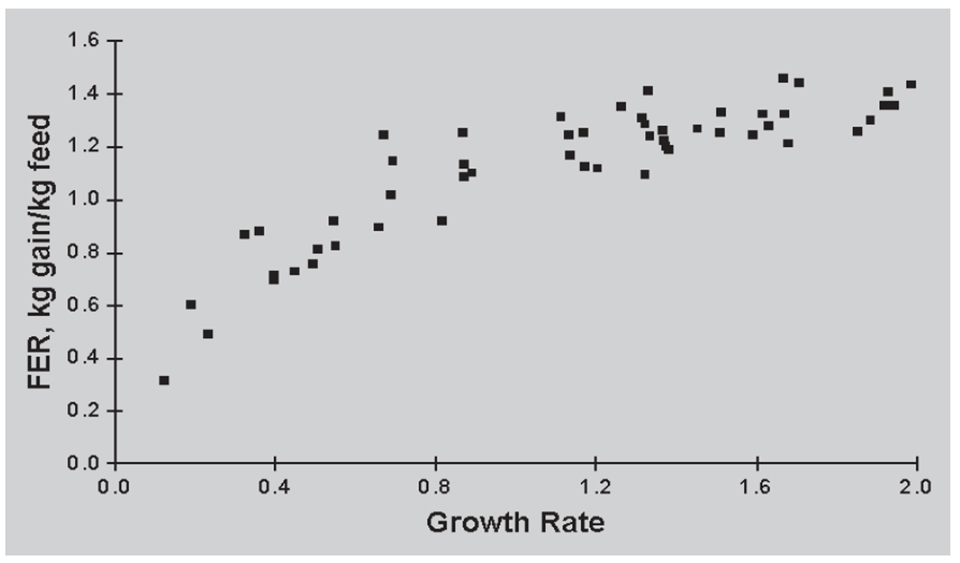
This relationship, however, was not linear. Increasing growth rate was associated with a decreasing response in feed efficiency ratio. This suggests that at some stage, it will be more beneficial to select directly for improved feed efficiency in Atlantic salmon, as has earlier been concluded for poultry.
Energy component of weight gain
Results from several experiments with Atlantic salmon indicate a significant genetic variation in deposition of energy in the carcass and viscera per unit of body weight gain. Feed efficiency can therefore be improved indirectly by reducing the energy content of the weight gain, assuming the energy content is higher than optimum. Thus, increased feed efficiency in Atlantic salmon may be achieved by selection for increased growth rate or less energy in weight gain.
However, this indirect selection response will decline with increasing growth rate and when the energy in the weight gain has reached an optimum level. Further improvement in feed efficiency must be obtained by a directselection procedure. This will require new and cheaper technology that can be used to measure feed intake of individual fish or full-sib family groups. Development of such technology should be encouraged.
Conclusion
Genetic selection of salmon for growth rate is indirectly improving feed efficiency. Additional indirect gains can be achieved through reduction in the energy content of weight gain. Ultimately, technology will be required for direct selection based on feed efficiency.
Note: Cited references are available from the first author.
(Editor’s Note: This article was originally published in the December 2001 print edition of the Global Aquaculture Advocate.)
Now that you've reached the end of the article ...
… please consider supporting GSA’s mission to advance responsible seafood practices through education, advocacy and third-party assurances. The Advocate aims to document the evolution of responsible seafood practices and share the expansive knowledge of our vast network of contributors.
By becoming a Global Seafood Alliance member, you’re ensuring that all of the pre-competitive work we do through member benefits, resources and events can continue. Individual membership costs just $50 a year.
Not a GSA member? Join us.
Authors
-
Bjarne Gjerde
AKVAFORSK
P.O. Box 5010, N-1432 Ås
Norway -
Jørn Thodesen
ICLARM, Penang
Malaysia -
Barbara Grisdale-Helland
AKVAFORSK
Sunndalsøra
Norway
Related Posts
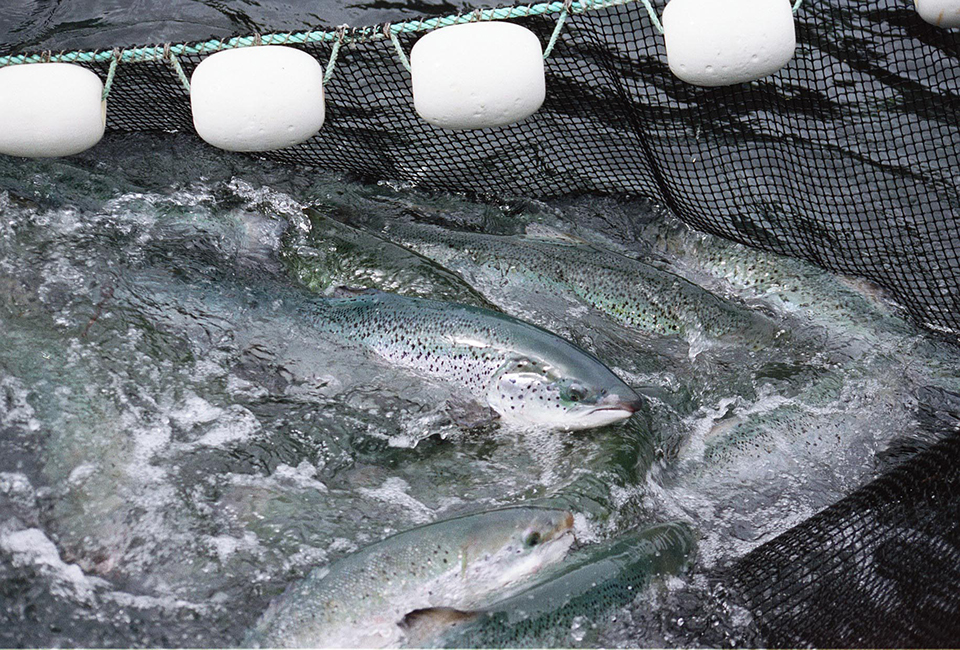
Intelligence
Better to eat – farmed or wild salmon?
There is a widely promoted misconception that eating wild-caught fish is better for the oceans than eating farmed seafood. On a global basis, however, sustainably farmed fish may represent 60 times more efficient use of anchovies and other baitfish resources than wild fish.
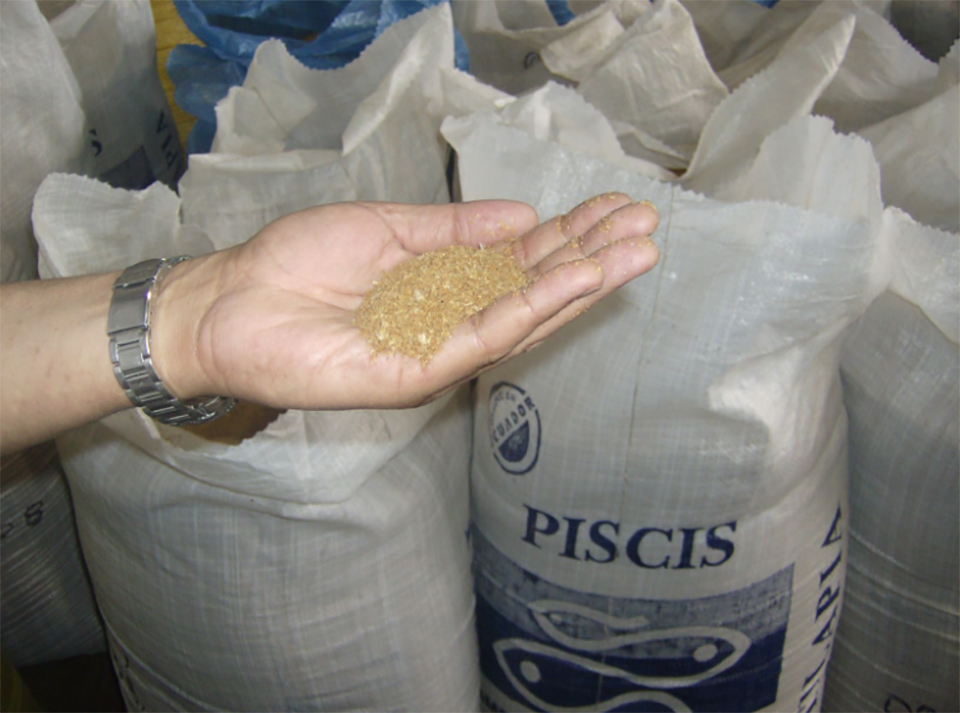
Aquafeeds
Feed Innovation Network: A streamlined aquafeed ingredient evaluation tool
To position aquaculture for future growth, it needs tools to evaluate a growing spectrum of alternative ingredients and formulated diets designed to optimize fish health and efficient production.
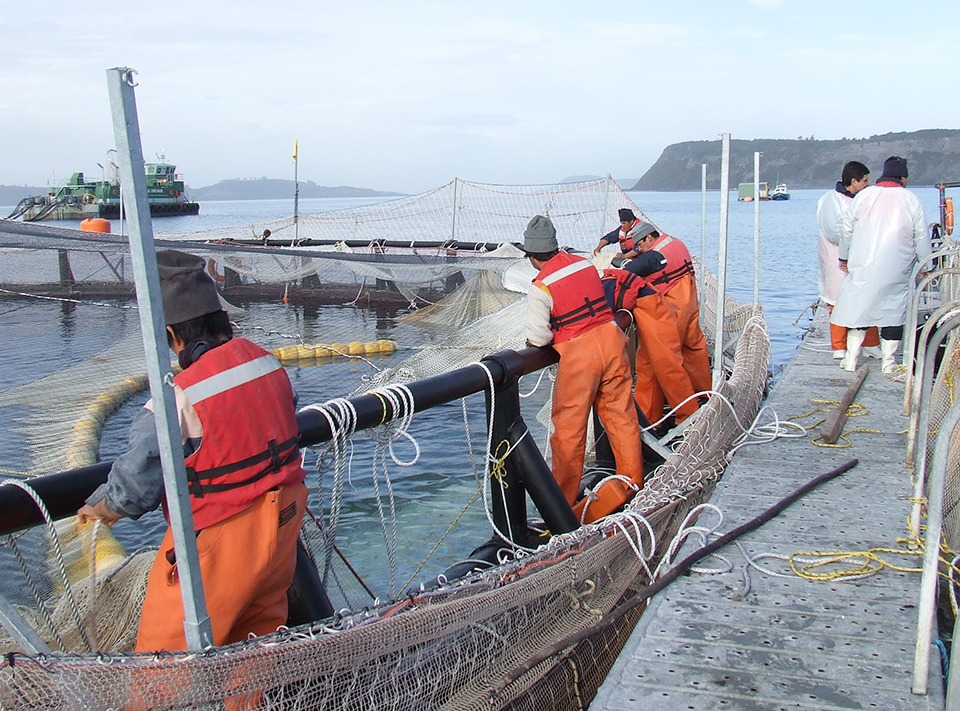
Health & Welfare
Chile’s salmon industry addresses health crises
Environmental and fish health problems have affected Chile’s salmon farmers since 2004. As production ramped up, 2006 saw an increase in sea lice that reduced output. In 2007, infectious salmon anemia spread across the farming region and quickly cut production.
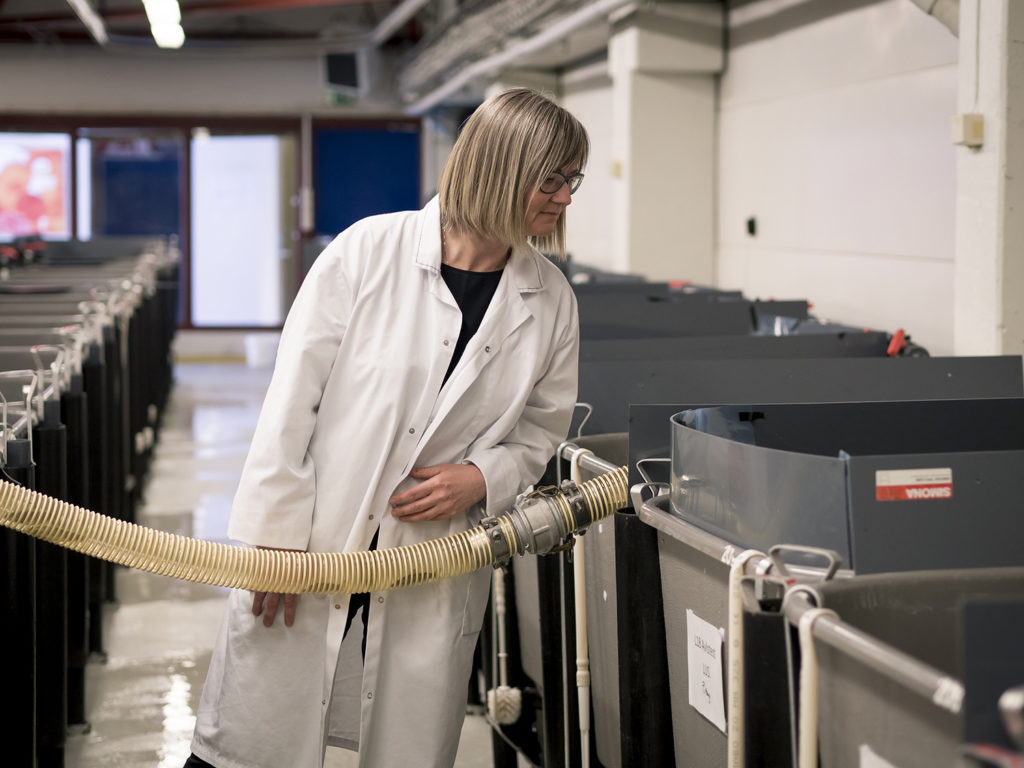
Innovation & Investment
AquaGen CEO: Genomics are transforming aquaculture
The CEO of AquaGen knew that the Norwegian research group’s work in genomics was key to the salmon industry’s future. And that was before she even worked there.


